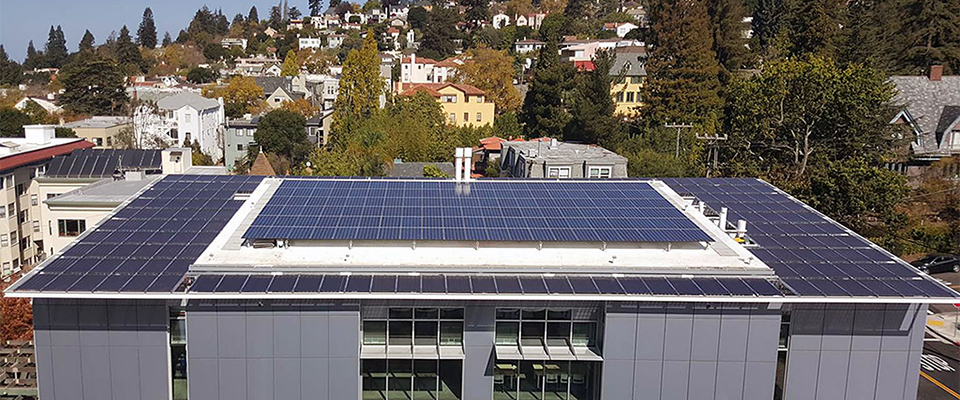Steam rises from the squat gray building next to Cal’s baseball diamond, the billows white against the blue sky. Long a familiar presence, the vaporous plume will disappear in the not-too-distant future, as the power plant that creates it is retired.
In 2028, as part of Berkeley’s ambitious Clean Energy Campus plan, the 36-year-old gas-fired cogeneration plant will be replaced with a new electrified heating and cooling plant, to be located at North Field, the extramural playing field just north of Hearst Gym, and a utility-fed electrical system.
The current power plant provides about 90 percent of the electricity and 100 percent of the steam needs of campus. When it was first brought online in 1987, the cogen plant was state of the art, efficiently producing both electricity and steam, the latter used for heating and lab processes. But now, says Kira Stoll, chief sustainability and carbon solutions officer, it’s time to move on to a better, cleaner source of power—one that doesn’t emit 135,000 metric tons of CO2 annually.
“One really critical piece of this is the heightened awareness that we need to act on the climate and create solutions,” Stoll said. “If we’re investing in infrastructure that’s going to be around for 50 or more years, we really don’t want to invest in last-century technology. We really need to invest in the future.” Indeed, if all goes according to plan, Berkeley will become the first University of California campus to achieve zero-carbon energy goals.
As envisioned, the new thermal plant will be largely underground, with thermal storage tanks for hot and cold water, and one floor above grade from which passersby can view the inner workings. The recreational field will remain—on the rooftop of the facility. And the plan also entails creating new campus access from Bancroft Way, featuring an ADA accessible pathway.
The electricity to power the thermal plant will be from clean, renewable sources supplied by PG&E and transmitted from the location of the original campus power plant, a.k.a. the Old Art Gallery on Strawberry Creek—the brick structure with the large WPA-era mosaic murals gracing its exterior.
An additional 15 MW of on-campus solar power, 8 MW of fuel cell power, and 30 MW/h of battery storage capacity will provide base power and resiliency to the system.
All told, the plan is expected to cost $700 million. In 2022, campus secured $249 million in state funding to begin the project, and phase one is currently underway. Barring any delays, campus leaders hope to break ground on construction in 2024. When phase one is finished, the new system will provide heating and cooling to 100 of the main campus buildings and reduce campus carbon emissions by 70 percent.
Phase two, expected to be complete by 2030, will involve connecting the rest of the buildings to the thermal distribution network, resulting in an 85 percent reduction in campus building carbon emissions.
Campus leaders hope Cal can serve as a learning laboratory and model, on the scale of a mid-sized city, for how society can transition away from fossil fuels.
“It is our intention to make our journey something that is transparent and available to others to learn from,” Stoll said. “And we think it’s critical that institutions like ours that can make this change quickly do make it as soon as possible.”





















